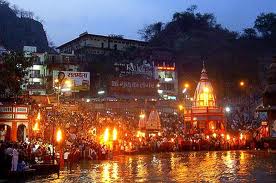The Indian Government has spent more than $1.2 billion on schemes to clean up the revered Yamuna River, but it is now more toxic than at any other time in its history.
The Yamuna is worshipped with the Ganges as one of Hinduism’s holiest rivers. For Hindus, it is a living goddess, whose water once parted to allow Lord Krishna and his father to flee from their would-be killers. It flows from the Yamunotri Glacier in the Himalayas down through Haryana to Delhi and on to Agra, past the Taj Mahal. But even before it reaches the Indian capital, most of its water is siphoned off into canals for irrigation and drinking water.
The growth in New Delhi’s population to 22 million and the rise of illegal slums has led to a great increase in human waste and rubbish, much of which is dumped in the river. More than 1.8 billion litres of sewage enters it from Delhi’s drains each day without passing through the city’s treatment plants. Human ashes, leather tanning chemicals, pesticides and painted religious idols all add to the toxicity.
The Yamuna’s black, foaming water has long been an embarrassment to the Indian Government. More than $1.2 billion has been spent on sewage treatment plants, toilets and waste pipes and plans have been drawn up to transform the river from a large latrine into an urban parkland with waterside paths and playgrounds.
But the Indian Parliament’s standing committee on urban development said in a report: “[The] Yamuna is dirtier than ever even after a huge amount of rupees – 6500 crore ($1.24 billion) – has already been spent to clean the river. The committee came to know that more than 1500 crore has been spent on cleaning the Yamuna River in the last two decades under the Yamuna Action Plan. By now, the Yamuna’s water – polluted and black – should have been cleaner. However, that has not happened.”
The committee called on the Government to speed up work on new interceptor pipes to take waste from the capital to sewage treatment plants before being returned to the Yamuna. It also highlighted the drying up of tributaries and said less water should be diverted into canals to increase the flow – much of the solid waste that makes Delhi smell would be washed away if the river flowed faster.
Manoj Mishra, a leading environmentalist and campaigner to save the river, said officials had created the problem by allowing so much of the Yamuna’s water to be diverted into canals. Haryana state took 60 per cent before it reached New Delhi, the capital drew 10 per cent and Uttar Pradesh, India’s most populous state, took 20 per cent. The remaining 10 per cent was “100 per cent sewage, waste water, an industrial cocktail in the city”, Mishra said.






